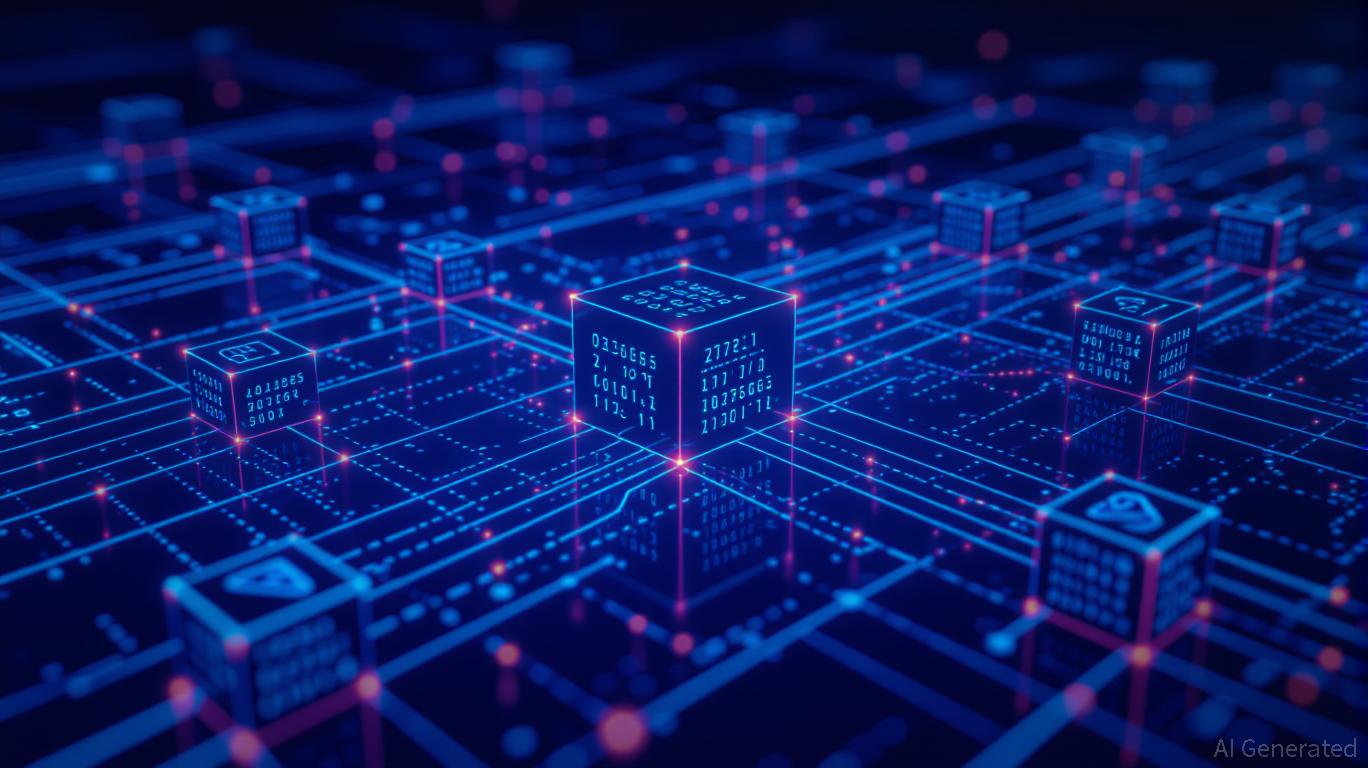The Rapid Rise of ZK Technology: Could This Spark the Upcoming Crypto Bull Market?
- Zero-knowledge (ZK) technology addresses blockchain scalability via ZK rollups, enabling 43,000 TPS and 90% lower costs, as seen in ZKsync and StarkNet upgrades. - Institutions like Deutsche Bank and Sony adopt ZK-based solutions for confidential settlements and rights management, reducing gas costs by 70% for institutional transactions. - ZK rollups drive a $90B Layer 2 market by 2031, with StarkNet’s $72M TVL growth and venture capital inflows signaling institutional validation and commercial viability
ZK Technology: Ushering in a New Era of Scalability
Zero-knowledge proofs (ZKPs) allow transactions to be validated without revealing confidential information, making them a powerful tool for blockchain scaling.
Vitalik Buterin, Ethereum’s co-founder, has underscored ZK’s promise by suggesting integrations with multi-party computation (MPC) and trusted execution environments (TEEs). These hybrid approaches could enable features like confidential state queries and secure voting, expanding ZK’s applications beyond payments, as reported by the

Institutional Adoption: Moving from Pilots to Core Infrastructure
Between 2023 and 2025, institutional interest in ZK technology has surged, motivated by regulatory compliance and operational streamlining. Deutsche Bank and Sony have adopted ZK-powered Layer 2 solutions to enhance confidential settlements and manage media rights, according to a
The financial industry’s adoption of ZK is
Market Dynamics: ZK as a Driver of Expansion
The Layer 2 scaling sector is expected to expand at a 60.7% CAGR, reaching $90 billion by 2031, according to the Crypto Research report. This growth is propelled by ZK rollups’ ability to streamline both DeFi and traditional finance. For example, StarkNet’s increase in TVL and zkSync’s 694% rise in transaction fees demonstrate the commercial strength of the technology, as reported by Wral.
Institutional endorsement is also changing market perceptions. Deutsche Bank’s Ethereum-based Layer 2 infrastructure and Sony’s application of ZK for digital rights management reflect a move from doubt to strategic adoption, as Wral reports. Meanwhile, the influx of venture capital into ZK-centric startups points to a maturing sector ready for rapid expansion.
The Bull Run Equation: ZK’s Impact on the Next Market Cycle
Historically, major crypto rallies have been sparked by technological breakthroughs. ZK technology meets all the criteria: it addresses scalability, complies with regulatory standards, and attracts institutional investment. The projected $90 billion Layer 2 market and $72 million TVL increase on
Yet, challenges persist. The complexity of ZK demands a strong developer community, and regulatory changes could affect its adoption. Nevertheless, the intersection of technological progress and institutional confidence indicates that ZK is evolving from a specialized tool to a foundational element for blockchain’s future.
Conclusion
Zero-knowledge technology has moved beyond theory to become a practical solution for blockchain scalability and privacy. With institutional uptake accelerating and valuations climbing, ZK rollups are emerging as the backbone of the next crypto bull market. For investors, the question is no longer if ZK will play a pivotal role—but how soon it will redefine the industry.
Disclaimer: The content of this article solely reflects the author's opinion and does not represent the platform in any capacity. This article is not intended to serve as a reference for making investment decisions.
You may also like
BlackRock CEO Larry Fink Says Bitcoin and Crypto Growing Rapidly
Crypto Market Surges by $75 Billion in 3 Hours as Bitcoin Leads the Rally
BNY projects a $3.6 trillion stablecoin market, contingent upon regulatory clarity and institutional cooperation
- BNY Mellon forecasts $3.6T stablecoin/tokenized cash market by 2030, driven by institutional adoption and regulatory progress. - EU MiCA and U.S. GENIUS Act (2025) mandate 100% reserve backing, fostering institutional confidence through clear compliance standards. - JPMorgan's JPMD stablecoin and USDsui's yield-focused model exemplify institutional blockchain integration for faster payments and liquidity. - Regulatory fragmentation and UK-style reserve caps could hinder growth, while permissioned chains

XRP Reserve Shrinks by 140,158,000, Who’s Buying?